Analyzing Weather Patterns in Oscoda, MI
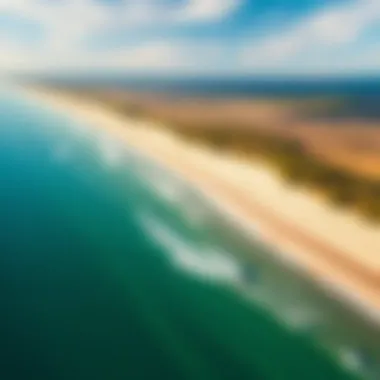
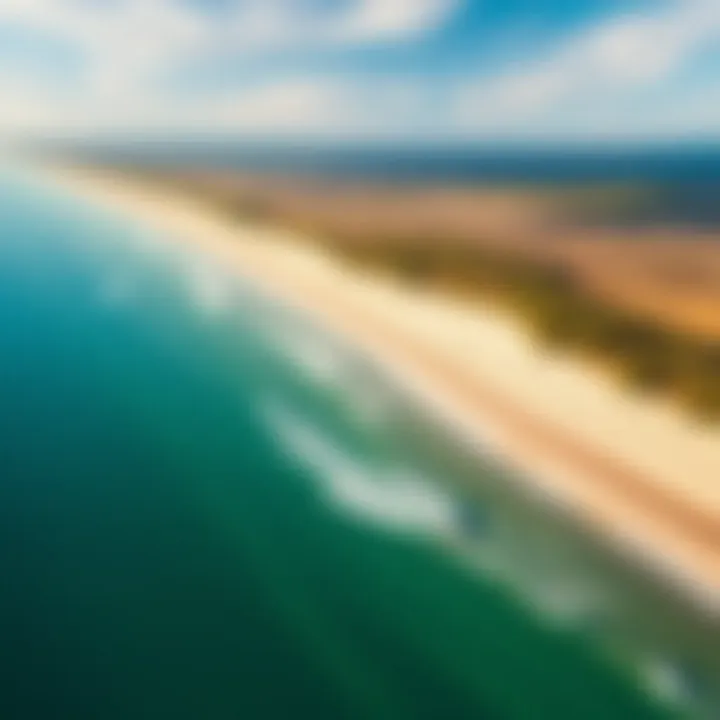
Intro
In the heart of Oscoda, Michigan, a unique interplay of meteorological phenomena shapes the landscape and quality of life, particularly for kiteboarding enthusiasts. Here, the weather is not just a background player; it’s a critical factor that governs the possibilities and limitations of the sport. Understanding these weather patterns through radar analysis allows kiteboarders to enhance their experience on the water, making informed decisions that lead to safer and more exhilarating sessions. This article aims to demystify these patterns, offering insights that go beyond mere forecasts, guiding both seasoned adventurers and this looking to take the plunge.
By diving into local radar data, we will explore how changing weather conditions, influenced by regional topography and seasonal variations, play a central role in kiteboarding. Expect the unexpected—Oscoda’s weather can swing like a pendulum, bringing both challenges and opportunities. As we dissect these elements, we aim to equip our readers with practical knowledge and a strategic outlook, paving the way for well-planned kiteboarding outings.
With an understanding of what lies ahead in the skies, kiteboarders can more confidently navigate their routes, harnessing favorable winds and waves to make the most of their time on Lake Huron. However, before we delve into the intricacies of kiteboarding in Oscoda, we need to take a closer look at the gear that can make or break your experience on the water.
Foreword to Weather Radar Technology
Understanding how weather radar works is quite crucial, especially for adventurers like kiteboarders who depend on real-time weather data. Weather radar technology captures the dynamics of the atmosphere and translates them into valuable information, helping enthusiasts plan their excursions with better accuracy. This section dives into its workings and different types of systems available in the field.
What is Weather Radar?
Weather radar is a specialized tool designed to detect and analyze precipitation in the atmosphere. The core of this system lies in its ability to send out radar waves and receive the signals bounced back after hitting water droplets or ice crystals in the air. This backscatter of signals not only reveals the location of rain or snow but also provides insight into the intensity and movement of these weather systems.
The data collected is then processed to generate images that depict weather conditions over a certain area. By observing these images, you're not just looking at pretty pictures; you can assess potential storms, gauge their strength, and predict their movement. This real-time feedback can make all the difference in planning a kiteboarding session, where wind and rain changes are pivotal to safety.
Types of Weather Radar Systems
Several radar systems exist, each catering to various aspects of meteorological studies. They vary in sophistication and applicability, allowing weather experts and enthusiasts to select systems best suited for their needs. Here are the most common types:
- Doppler Radar: This is perhaps the most widely known system. It measures the change in frequency of the returned radar waves, which helps in identifying wind speed and direction, essential for recognizing storm rotation and tornado formations.
- Pulse-Doppler Radar: This type enhances the basic Doppler concept by broadcasting short bursts of radar pulses. This aids in detecting faster-moving precipitation formations with higher precision, useful for spotting severe weather events.
- Phased Array Radar: A newer technology that can scan the atmosphere much quicker than traditional systems. It utilizes multiple antennas to create a more detailed picture of weather patterns, allowing for instant updates—ideal for those on the go.
- Weather Surveillance Radar (WSR): Primarily used by meteorological stations, this radar provides broad coverage and is excellent for tracking large storm systems. It serves as a key resource for understanding regional weather anomalies.
Adopting a keen understanding of these systems enhances one’s ability to interpret weather data, ultimately leading to safer and more enjoyable kiteboarding experiences.
Weather Patterns in Oscoda, Michigan
Understanding the weather patterns in Oscoda, Michigan, is pivotal for various activities, particularly kiteboarding. Kiteboarders need to grasp how wind currents, temperature changes, and precipitation can impact their experience on the water. This region, located on the shores of Lake Huron, has unique weather influences due to its geographical position, making knowledge of its patterns essential for safe and enjoyable outings.
Weather in Oscoda isn't just about the daily forecast; it's a dance between local geography and atmospheric conditions. For instance, the proximity to the lake can lead to distinctive microclimates. Shortcutting this knowledge can lead to missing out on ideal kiteboarding days or facing unexpected challenges.
Geographical Influences on Local Weather
Let’s dive deeper into the geographical elements affecting Oscoda's weather. The most significant factor is Lake Huron, which can alter weather phenomena in striking ways. The lake often moderates temperature ranges, preventing extreme heat in summer and cold in winter. However, this humidity brings its own set of challenges, like fog and sudden rain showers.
In addition, Oscoda's positioning between rolling hills and flatlands creates a unique wind pattern. These hills can funnel winds, sometimes amplifying them in certain areas. For kiteboarding, this means that while some spots can have steady breezes ideal for riding, others may experience gusts or turbulent conditions that could be detrimental.
- Proximity to Water: Water bodies can create microclimates.
- Terrain Diversity: Rolling hills and flat areas influence wind patterns.
- Seasonal Variations: The geographical layout affects seasonal weather changes.
Seasonal Weather Changes
Every season in Oscoda brings about its own weather narratives. Summers are generally warm, with fair winds perfect for kiteboarding, often reaching peak temperatures in July. Kiteboarders often flock to the warm waters during this time, anticipating consistent northeast winds. However, storm systems can also be unpredictable, with thunderstorms cropping up unexpectedly.
As autumn rolls in, the winds can become quite dynamic. Small craft advisories aren't uncommon as colder fronts sweep through, turning tranquil days into rougher conditions quickly. Meanwhile, winter offers a completely different face with its biting cold; kiteboarding becomes an even more specialized adventure as ice and snow transform the landscape.
Spring serves as a bridge, gradually warming the air while still holding onto chillier nights. This time sees variable weather; some days might be balmy, while others may bring sharp winds. Understanding these seasonal shifts helps kiteboarders plan effectively.
- Summer: Predominantly warm with favorable winds.
- Autumn: Rapid changes, possible severe weather.
- Winter: Revamped adventure opportunities, ice-covered landscapes.
- Spring: Unpredictable with both warm and cold fronts colliding.
Understanding these weather patterns not only helps in gearing up appropriately but also promotes safety during kiteboarding sessions. This awareness becomes second nature over time, fostering a more enjoyable relationship with the waters of Oscoda.
Understanding Radar Images
Radar images serve as a critical tool in grasping the ever-changing weather conditions, especially in a location like Oscoda, Michigan. Taking a closer look at these images can vastly improve one’s ability to interpret weather patterns, which is quite vital for those who enjoy kiteboarding. Understanding what these images convey allows adventurers to make informed decisions, ensuring safety and enhancing performance on the water.
One cannot overlook how radar images reflect not just precipitation but also broader atmospheric phenomena. For instance, they provide insight into wind direction, storm movement, and even temperature gradients. This information is essential; it is like having a compass for navigating weather conditions, especially when they can be as fickle as a cat in a room full of rocking chairs.
The benefits derived from interpreting radar images are numerous.
- Real-Time Updates: Using radar provides instantaneous insight into weather changes that can affect kiteboarding, such as sudden gusts or rain showers.
- Safety Precautions: By understanding radar images, kiteboarders can identify dangerous weather trends ahead of time, helping prevent potentially hazardous situations.
- Planning Sessions: Knowledge from radar images allows enthusiasts to choose optimal times and locations for riding, based on predicted weather conditions.
It's important for kiteboarders not just to look at the colorful representations of precipitation on radar but also to understand their context. This understanding encompasses grasping how meteorological factors like fronts and jet streams influence local conditions. For example, a cold front moving into Oscoda may result in stronger winds which could be perfect for experienced kiteboarders but tricky for novices.
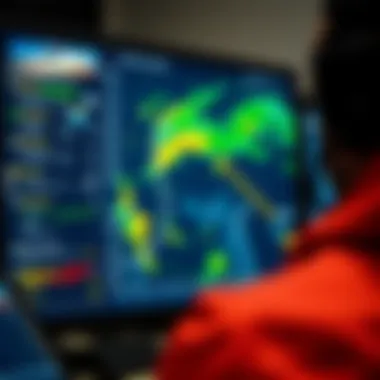
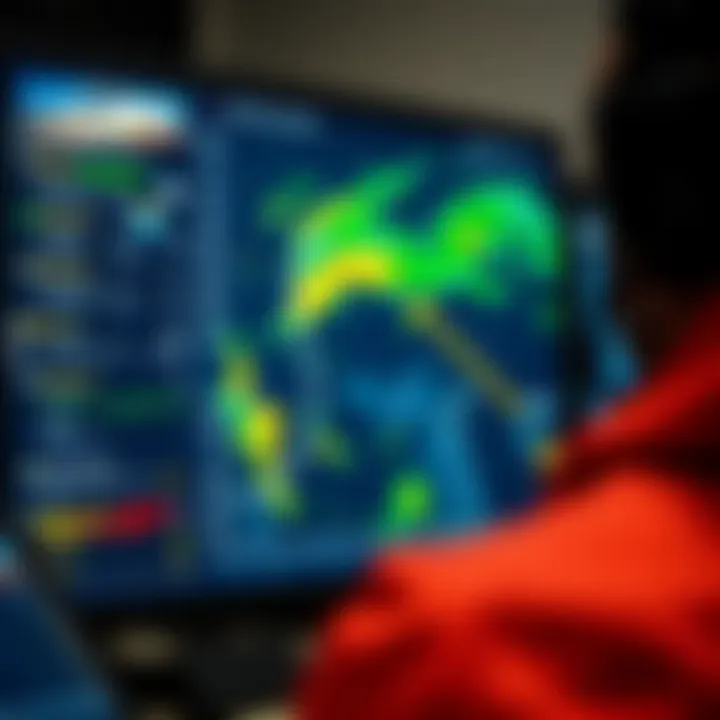
"Understanding the nuances in a radar image is key; it’s like reading a weather diary that reveals the day's forecast and potential surprises."
In a nutshell, radar images hold a wealth of information ripe for exploration. Anyone with a keen eye and a willingness to learn can decipher details that transform one’s approach to engaging with weather. It opens doors to mystery and anticipation, leading intrepid adventurers toward exhilarating kiteboarding experiences.
Interpreting Radar Readings
The art of interpreting radar readings goes beyond merely looking at colors on a screen. Each shade represents different levels of precipitation, playing a crucial role in forecasting local weather. For kiteboarders, the distinction between light and heavy rainfall can alter choices dramatically. When readings indicate light showers, adventurous souls might decide to go for a session, enjoying the thrill of a few raindrops on their skin. Conversely, heavy rainfall presents a clear signal to reconsider their plans.
Moreover, radar readings provide valuable insights into storm intensity and movements. Recognizing the difference between a developing thunderstorm and a mere rain shower is key; it’s essential to avoid being caught off-guard later.
Common Radar Terminology
To engage effectively with radar images and readings, some common terminologies can become a kiteboarder's best friend:
- Reflectivity: Measures the amount of precipitation, giving insight into storm strength. Higher reflectivity correlates with more intense rain or hail.
- Doppler Velocity: Indicates the speed and direction of precipitation movement. This helps in predicting where storms are heading.
- Echo Tops: Refers to the height of precipitation clouds. Understanding this can inform kiteboarders about storm sizes.
Familiarizing oneself with these terms can streamline the process of reading radar information, making it a lot less daunting. So, next time someone looks at you puzzled while you explain why the green area on the radar means light rain, you can feel confident to throw around some jargon and impress your peers.
Impact of Weather on Kiteboarding
The connection between weather and kiteboarding cannot be overstated. For enthusiasts and professionals alike, understanding the nuances of local weather patterns in Oscoda, Michigan, is crucial for ensuring not only a thrilling experience but also for maintaining safety on the water. Weather dynamics play a pivotal role in setting the stage for the conditions that kiteboarders face on any given day.
In essence, kiteboarding relies heavily on excellent wind conditions and corresponding temperature experiences. This is why it’s essential to keep an eye on local forecasts and radar data, as they offer real-time insights into what kiteboarders can expect, allowing for better planning and sharper decision-making when it comes to when and where to ride.
Wind Patterns and Kiteboarding Conditions
When it comes to kiteboarding, wind is the lifeblood. Without it, enthusiasts are simply stranded on the beach, watching a mere sail sway uninspiringly. In Oscoda, diverse wind patterns can arise from geographical variances, lake effects, and seasonal changes, making it vital for kiteboarders to assess these before hitting the water.
- Direction Matters: In kiteboarding, wind direction can drastically change the riding experience. For example, northeast winds might favor one spot on the beach while making other areas less ideal for riding. It’s beneficial to be in tune with local wind directions, which can be obtained via weather websites or local apps.
- Wind Strength: The strength of the wind can either make or break a kiteboarding session. Too little wind? Not enough lift to foil up. Too much? You might find yourself being pulled off your board and into the waves. Ideal wind for recreational riders generally hovers between 12 to 20 knots, enabling a comfortable lift while avoiding a chaotic experience.
- Variability and Turbulence: Wind isn’t always consistent; fluctuations can occur, especially as storms roll in or as air hits different terrains. Understanding these shifts will help in anticipating the kiteboarding conditions. Riders look out for local weather patterns, including any potential storm fronts or sudden weather changes that could impact the wind.
Temperature Effects on Performance
Temperature is another critical factor affecting kiteboarders' performance. The relationship between heat and efficiency relates closely not just to human comfort but also to gear effectiveness.
- Gear Relativity: Different kite materials perform uniquely at various temperatures. For example, a kite designed for cooler conditions may not handle well in warmer, humid air, and vice versa. Understanding how temperature impacts gear can help in making smarter choices when selecting equipment for the day. Cooler days may require heavier wetsuits, while warmer temperatures might call for lighter attire.
- Physical Endurance: The launch site conditions can also affect the rider's endurance and performance. On hot days, hydration and cooldown techniques become paramount, as overheating can diminish focus and reaction time. Conversely, cold weather brings about its own set of challenges, including how one's body responds to the chill.
Engaging with local resources can provide further insights on how temperature affects kiteboarding. Weather websites like the National Weather Service (www.weather.gov) or specific forums can guide riders toward understanding how to optimize their sessions according to temperature assessments.
“Successful kiteboarding means not just riding with the wind, but also reading it.”
In summary, knowledge about local weather patterns in Oscoda significantly enhances the kiteboarding experience, enabling enthusiasts to be prepared, equipped, and safe while they enjoy the thrill of riding the waves.
Local Weather Sources and Resources
In Oscoda, being attuned to local weather sources and resources is of utmost importance, especially for those venturing out on the water, like kiteboarders. The interplay between weather patterns and kiteboarding conditions can make or break a session. Accurately assessing these conditions means turning to reliable resources that provide real-time, location-specific data. An informed kiteboarder knows better than to rely solely on general forecasts; understanding your local weather can be the difference between a thrilling ride and an unexpected swim.
Selecting the right resources ensures that kiteboarders can adequately prepare for the shifts and nuances of Oscoda’s weather. From wind direction to impending rain, the information available today can help riders navigate the waves more safely and efficiently. Good resources can indicate not just when to hit the water but can also educate on best practices during changing weather, making the experience more enjoyable.
Reliable Weather Websites
When it comes to reliable weather websites, several stand out for their accuracy and depth of information. Websites like the National Weather Service (weather.gov) provide comprehensive data, including radar imagery, severe weather alerts, and forecasts tailored specifically for Oscoda.
Local options, such as Oscoda's own weather blog and community forums on platforms like Reddit, also provide valuable insights from locals who understand the whims of the area's weather.
Some noteworthy specifics include:
- National Weather Service: Offers official alerts and innovative radar technology to keep you updated.
- Weather Underground: Known for its hyper-local weather predictions thanks to contributions from thousands of weather stations.
- AccuWeather: Provides an app and detailed forecasts, allowing for convenient weather tracking on the go.
Mobile Apps for Real-Time Updates
With smartphones almost an extension of ourselves these days, having the right mobile apps can enhance your ability to stay in the loop about changing weather conditions. Apps like Windy, which specializes in wind readings, can be a game changer for kiteboarders. You can see not just the wind speed but also its direction overlaid on interactive maps.
Let's dig into a few popular mobile options that can facilitate your decision-making process for kiteboarding:
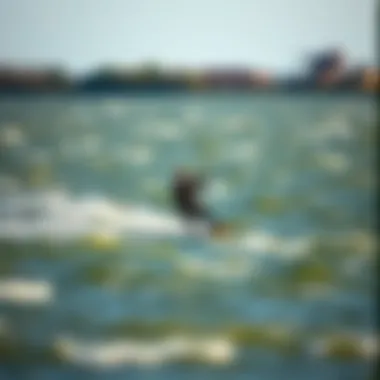

- Windy: This app showcases real-time wind data, providing detailed maps that can help determine ideal kiteboarding times.
- Buoyweather: Ideal for ocean conditions, it offers forecasts based on buoy data. User-friendly and focused on marine forecasts, it is essential for kiteboarding prep.
- Storm Radar: This one gives you access to live radar, allowing you to track storms over time.
In summary, the variety of local weather sources and resources available today empowers kiteboarders in Oscoda to make informed decisions, ensuring not just a good time on the water but their safety as well. Staying abreast of the weather increases enjoyment and confidence while kiteboarding.
Navigating Weather Alerts
Understanding the intricacies of weather alerts is essential for anyone who plans to spend time outdoors, particularly kiteboarders in Oscoda, Michigan. The changing nature of weather can bring about quick decisions that can impact safety and enjoyment on the water. Thus, being well-informed about weather alerts isn't just a suggestion; it's a necessity that should guide actions during various weather phenomena. In this section, we will explore the details of weather warnings and best practices for kiteboarders during adverse conditions.
Understanding Weather Warnings
Weather warnings serve as critical communication tools, letting individuals know about impending weather conditions that could pose risks. These alerts fall into various categories, each providing different levels of urgency:
- Severe Thunderstorm Warnings: Indicate that a thunderstorm is producing damaging winds or hail. This can lead to hazardous conditions on the water.
- Tornado Warnings: Alert communities of a tornado's presence or that one is imminent. Such warnings require immediate action.
- Flood Warnings: Signal that a flood is occurring or expected. Kiteboarders should avoid waterways that may become dangerously high.
It's important to understand the language of these warnings. For instance, terms like "watch" and "warning" may seem interchangeable, yet they imply different levels of risk. A watch means conditions are favorable for severe weather, while a warning indicates that severe weather is occurring or imminent. Kiteboarders should heed these warnings, as they can be lifesavers.
"Ignoring a weather warning can turn a great day on the water into a perilous situation."
The National Weather Service (NWS) and local meteorological services often provide the most reliable alerts. Always check these sources for updates—it’s good practice to keep a close eye on the sky and radar, using mobile apps or websites dedicated to weather tracking.
Best Practices During Adverse Conditions
When weather conditions take a turn for the worse, how one reacts can make a significant difference. Kiteboarding in adverse weather isn't just unwise; it can be downright perilous. Here are key pointers for staying safe when the forecast doesn't cooperate:
- Know When to Stay Ashore: If a storm warning is issued, don’t take chances. Park your gear and wait until conditions improve. Remember, thrilling moments aren't worth a gamble with safety.
- Monitor Weather Updates: Utilize reliable apps or local websites for real-time updates. Apps like Windy or Weather Underground can be particularly useful for kiteboarders when gauging wind and storm conditions.
- Keep Gear Secure: In strong winds or storms, making sure your equipment is secured can prevent it from being damaged or turned into a dangerous projectile.
- Avoid Crowded Locations: Should conditions worsen, moving to less populated areas may decrease the risk of injury to yourself or others.
- Safety Equipment at Hand: Always have a personal flotation device and other safety gear on your person when engaging in kiteboarding. This isn’t just good practice; in adverse conditions, it could be the difference between safety and disaster.
By following these practices, kiteboarders can navigate the challenges posed by weather alerts, ensuring experiences on the water are both exhilarating and safe. Staying informed is key—weather can change on a dime, and being two steps ahead just might save your life.
Case Studies: Noteworthy Weather Events in Oscoda
The study of weather in Oscoda, Michigan, cannot be complete without a thorough examination of its most impactful weather events. These case studies shine a spotlight on how radar technology can help dissect significant phenomena and their lasting repercussions on the region. Understanding these events not only builds awareness among locals and visitors but also informs kiteboarding enthusiasts about the potential risks and rewards associated with the local weather patterns. By analyzing raw data and correlating it with anecdotal evidence, we can derive valuable lessons and better prepare for future weather happenings.
Severe Storms and Their Aftermath
Weather in Oscoda is no stranger to severe storms, which can manifest as thunderstorms, tornadoes, or even blizzards during winter. For instance, a notable storm in the summer of 2018 led to extensive damage across the area. Radar images captured the development of a supercell storm that prompted the issuance of a tornado warning. As the rain began pelting the ground and winds whipped through the trees, local reports emerged of downed power lines and uprooted trees, creating hazardous conditions for both residents and visitors.
The aftermath of such severe storms reveals much about the community's resilience and the importance of timely information dissemination. Cleanup efforts often commence swiftly, but the task is daunting. Community members band together, sharing resources and helping neighbors cope with the immediate aftermath. Severe weather events leave a mark not just physically, but they also foster a sense of community that enhances the local spirit.
Moreover, kiteboarders must understand that these storms can significantly alter conditions on the water. The winds that precede such storms can be unpredictable, leading to dangerous situations for those who venture out during turbulent weather. Following severe storms, the water can be deceptively calm, as remnants of the previous squall linger beneath the surface, ready to catch the unwary kiteboarder off-guard.
Analyzing Historical Weather Data
To gain a comprehensive perspective on Oscoda's weather patterns, analyzing historical data is crucial. This involves reviewing archival radar images and meteorological records to identify trends, anomalies, and outliers in weather events. For kiteboarders and outdoor enthusiasts, such data serves as a treasure trove of insights.
One recent example of this analysis came after reviewing the 2019 autumn season, where an unusually high number of wind events were recorded. Meteorologists peaked into the intricate nature of weather systems and noticed a pattern tied to shifts in temperature and pressure systems from over Lake Huron. Consistently strong winds create ideal kiteboarding conditions, but understanding the intensity and gust nature from this data can help riders gear up appropriately and make informed decisions.
Besides mere wind patterns, historical weather data also reveals seasonal anomalies that might affect kiteboarding launching sites. Certain spots become more viable while others can become treacherous due to changing landscapes or increased debris in the water following storms. Collecting and analyzing this data equips every kiteboarder with knowledge that can enhance their experience while ensuring safety.
"Data is the new oil. It can fuel informed decisions, especially when it comes to understanding the taste of unpredictability that weather brings."
In essence, the case studies of noteworthy weather events in Oscoda not only highlight the physical impact of weather phenomena but also bring to light the role of data in future situations. Continuing to explore these narratives will empower residents and kiteboarders alike to adeptly navigate the ever-changing waters of Oscoda.
Technological Advancements in Weather Forecasting
In the realm of meteorology, keeping up with the latest technological advancements can sometimes feel like trying to predict the weather itself. One minute you think you have a grasp on it, and the next, a new gadget comes along to change the game. This article uniquely delves into how such advancements enhance our understanding of weather patterns in Oscoda, Michigan, particularly aiding kiteboarders and outdoor enthusiasts. Let's break this down in a way that's both insightful and practical.
The Role of Satellite Imagery
Satellite imagery has revolutionized how meteorologists observe and predict weather patterns. Unlike traditional radar, which relies on ground-based systems, satellites offer a bird's-eye view, providing data over a larger geographical area. This means real-time updates on cloud formations, storm systems, and temperature variations can be achieved without the constraints of location.
A lot of new satellites are equipped with hyperspectral sensors that capture a wider range of the electromagnetic spectrum. This capability allows for more precise tracking of moisture content in the atmosphere, crucial for forecasting precipitation in areas like Oscoda.
- Benefits of Satellite Imagery:
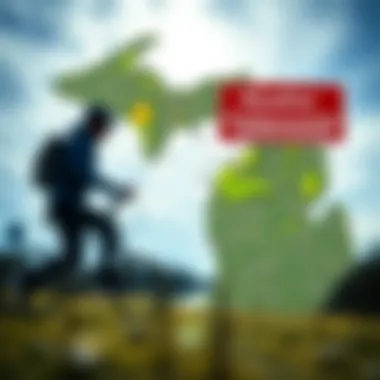
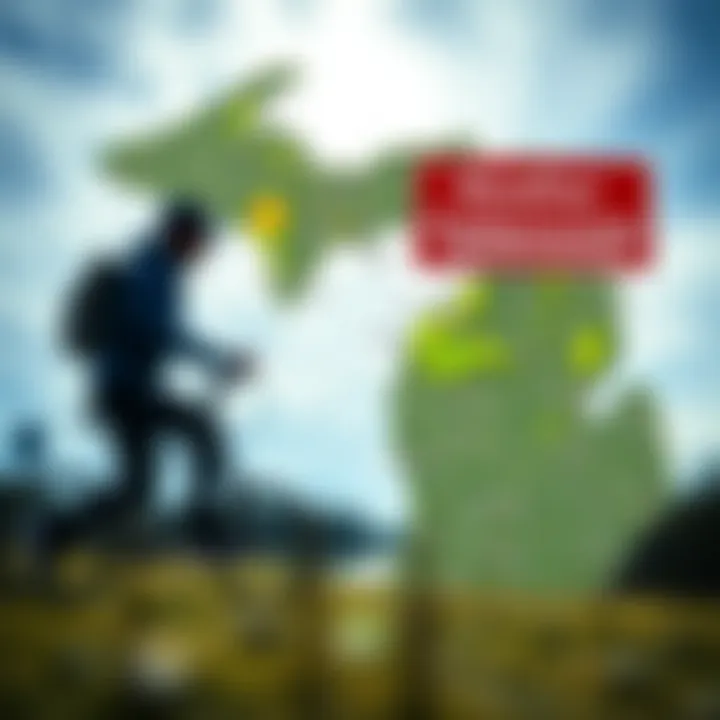
- Comprehensive coverage of large areas, reducing blind spots often seen in radar data.
- Ability to monitor weather patterns during the night and in adverse conditions.
- Improved forecasting accuracy---a game changer for kiteboarders who must depend on reliable wind and weather conditions.
When integrated with advanced algorithms, satellite data can also predict weather changes with remarkable precision. This technology enables kiteboarders to plan their outings to coincide with optimal wind conditions, keeping their adventures both exhilarating and safe.
Forecast Models: An Overview
Forecast models are like complex puzzle solvers that utilize vast amounts of data to predict upcoming weather patterns. These models take in observational data from various sources, including satellites, ground stations, and radars, to simulate the atmosphere’s physical processes. In simple terms, they’re the magic behind the meteorological curtain.
These sophisticated models fall generally into two categories: numerical weather prediction (NWP) models and statistical models. NWP models use mathematical equations describing atmospheric behavior, while statistical models look for patterns in historical data to make predictions. Both types offer their own advantages, but what matters most is their ability to deliver timely and accurate forecasts.
Key points to note about forecast models include:
- Simulation of weather phenomena: This allows for anticipation of local weather changes, crucial for kiteboarding and other outdoor activities.
- Adjustment to variables: As new data comes in, forecast models adapt quickly, helping predict sudden changes in wind speed or direction, factors critical for kiteboarders.
- Increased accessibility: Nowadays, many of these sophisticated models are available to the public through specialized weather websites, giving kiteboarding enthusiasts a leg up in planning their sessions.
"The effectiveness of weather forecasting doubles as the technology does. For kiteboarders, this translates into better days on the water."
Overall, the advancements in satellite imagery and forecast model technologies significantly enhance our grasp of weather patterns. For kiteboarders in Oscoda, understanding these elements can mean the difference between a thrilling day catching the wind and a session cut short by unpredictable weather. Remaining tuned into advancements in weather technology, kiteboarders can navigate their experiences with better-informed anticipation.
Best Practices for Kiteboarders in Variable Conditions
When kiteboarding in Oscoda, understanding the weather is more than just checking for pretty clouds; it's about managing risk and ensuring a great session on the water. The key here is to know how to adapt to the changing conditions that this area often presents.
Assessing Local Forecasts Before Riding
A kiteboarding escapade starts with being informed. Before heading out, kiteboarders should look at local forecasts. This goes beyond a quick glance at a weather app—taking time to analyze the details can make the difference between a thrilling ride and a dangerous one. Factors such as wind speed, direction, and potential storm activity are vital.
- Wind Speed: Ideally, kiteboarders should target wind speeds that match their skill level and equipment. It's best to steer clear if the forecast suggests steady winds at over 25 mph for beginners.
- Wind Direction: In Oscoda, the best wind directions tend to be south, southwest, or west. Knowing your favorite spots helps in determining how these directions will interact with local geography.
- Storm Warnings: Always keep an eye on storm alerts. Sudden weather changes can catch you unawares, so checking the radar in real-time can save a lot of hassle. Websites like Weather.gov or apps like Windy can provide up-to-the-minute updates and radar images that are crucial for safety.
Staying Safe: Gear and Preparation
Preparation isn't just packing your kite and board; it extends to having the right gear for the conditions and knowing how to use it effectively.
- Equipment Check: Ensure that all gear, including your kite, lines, and harness, are in top shape. Regular maintenance can prevent mishaps during a session. It’s simple: a knot here or a tear there can spell trouble.
- Safety Gear: Wear a life jacket that fits well and a helmet for added protection. Depending on the conditions, consider using impact vests which can cushion falls. In terms of visibility, bright colors can help other water users see you easier, especially when conditions get dicey.
- Stay Within Your Limits: If conditions feel unpredictable, it’s prudent to sit this one out. There's strength in knowing your limits. Listen to your gut—if the wind feels too strong or the water looks rougher than anticipated, best to postpone the session.
Ensuring safety on the water doesn’t just enhance an individual’s experience; it contributes to a sustained culture of awareness within the kiteboarding community in Oscoda.
"Being aware of both the weather and one’s own abilities is the key to enjoying kiteboarding and staying safe."
In sum, planning around the dynamic weather patterns is essential not only for enhancing performance but also for maintaining a safe and enjoyable kiteboarding experience in Oscoda.
Engaging with the Kiteboarding Community
Engaging with the kiteboarding community is not just a social endeavor; it's a vital part of understanding and enhancing the kiteboarding experience in Oscoda, Michigan. The local scene is rich with enthusiasts who have firsthand knowledge of the unique weather patterns and conditions that define this area. For anyone looking to take their kiteboarding skills to the next level, connecting with this community can serve multiple advantages.
One primary benefit of engaging is the wealth of knowledge shared among kiteboarders. Experienced riders can provide insights into optimal times of day for riding, preferred spots that offer the best winds, and even the subtleties of handling specific weather scenarios. As the saying goes, "Two heads are better than one," and when it comes to kiteboarding, the collective experiences contribute to a richer understanding of local conditions.
Additionally, kiteboarding can sometimes be a solitary sport. By interacting with other enthusiasts, riders can foster camaraderie, exchange tips, and even find partners for sessions. Such connections often lead to increased safety on the water. Having a buddy system in place allows kiteboarders to look out for each other, making every outing more secure and enjoyable.
To illustrate this point, consider the fluctuating wind conditions specific to Oscoda. Riders who engage with local groups learn to interpret these conditions better, avoiding potential hazards that arise from sudden changes in weather. Indeed, community engagement acts like a safety net while kiteboarding.
Sharing Weather Insights Among Wearers
An intrinsic part of community bonding is the sharing of weather insights among kiteboarders. As they say, knowledge is power. Having up-to-the-minute weather information is essential for any kiteboarder looking to maximize their time on the water. Whether it's via local forums or social media posts, sharing insights allows riders to convey valuable information quickly.
Local web platforms like Facebook groups and relevant subreddits are excellent places for sharing real-time updates about changing weather patterns. This can help fellow kiteboarders stay informed about wind speed, temperature shifts, and the arrival of any storm cells. Captivating posts about recent sessions can also provide clues about what conditions worked and what didn't, painting a clearer picture of weather behavior in Oscoda.
Kiteboarders may also use specialized mobile apps that provide radar imagery and precise forecasts, but these tools come alive when paired with anecdotal experiences from the community. When wearing friends share their input about wind patterns or tide changes based on the day’s conditions, it adds layers to the forecast—turning mere numbers into actionable insights.
"In the art of kiteboarding, the wind whispers, and the community listens."
Participating in Local Events
Participation in local kiteboarding events represents another crucial pathway for engaging with the community. These gatherings are not merely competitions; they are a celebration of the sport that foster deeper connections among participants. Whether it’s a local race, an informal get-together, or a community clean-up day at a favorite spot, these events help riders connect on and off the water.
At these events, attendees often learn from experienced professionals through workshops and demonstrations. This knowledge is invaluable, providing practical skills and techniques that riders can employ during their sessions. Furthermore, event participation helps to build appreciation for the local environment and fosters a sense of responsibility toward preserving it.
Additionally, many kiteboarding events in Oscoda include opportunities for networking. Talking to other riders, meeting brands that sponsor the events, and exploring potential partnerships may enhance one's exposure within the community. Thus, attendees walk away enriched not just by skills and knowledge, but also by the relationships they cultivate.
All these elements converge to make engaging with the kiteboarding community a multifaceted experience that resonates strongly with the true spirit of the sport. By sharing insights, participating in events, and building friendships, kiteboarders can create a vibrant network that supports and enhances their passion for riding.















